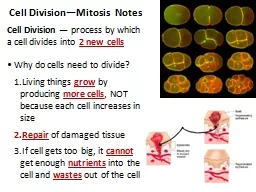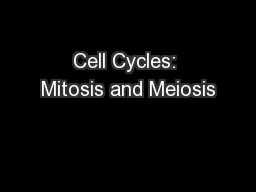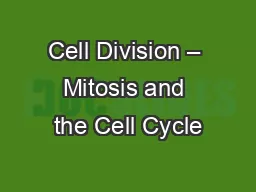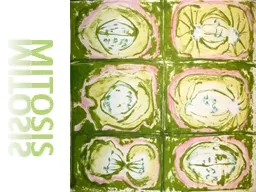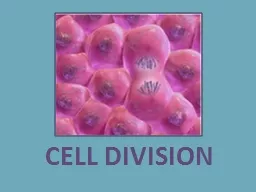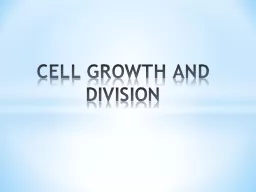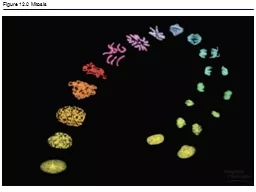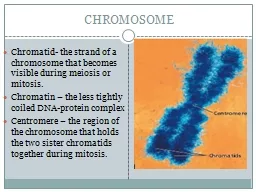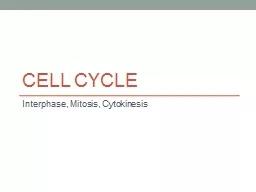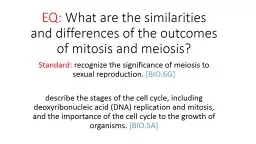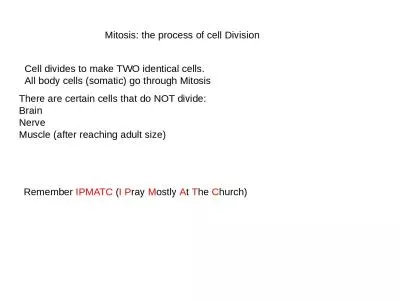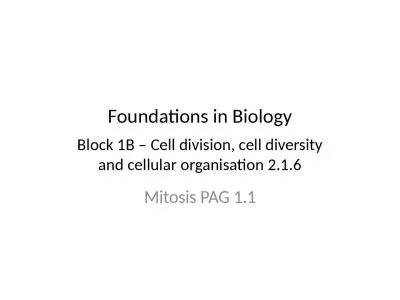PPT-Cell Division—Mitosis Notes
Author : teresa | Published Date : 2021-12-09
Cell Division process by which a cell divides into 2 new cells Why do cells need to divide Living things grow by producing more cells NOT because each cell
Presentation Embed Code
Download Presentation
Download Presentation The PPT/PDF document "Cell Division—Mitosis Notes" is the property of its rightful owner. Permission is granted to download and print the materials on this website for personal, non-commercial use only, and to display it on your personal computer provided you do not modify the materials and that you retain all copyright notices contained in the materials. By downloading content from our website, you accept the terms of this agreement.
Cell Division—Mitosis Notes: Transcript
Download Rules Of Document
"Cell Division—Mitosis Notes"The content belongs to its owner. You may download and print it for personal use, without modification, and keep all copyright notices. By downloading, you agree to these terms.
Related Documents

